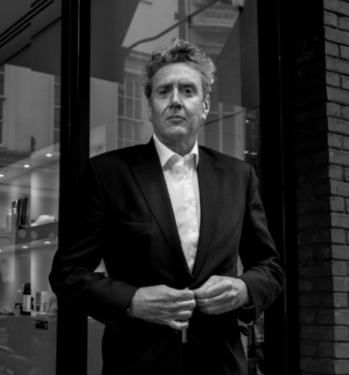Simon Moyes Shares His Experiences in the Area of Skiing
Orthopaedic surgeon and enthusiastic skier, Simon Moyes shares his experiences in the area of skiing accidents and tips on how to prevent them.
Meet Simon Moyes, Orthopaedic Surgeon to the stars, with a busy private clinic in London. He has treated some of the biggest names in film, fashion, sports, and music, curing their various ankle, shoulder and knee conditions.
Simon qualified from Middlesex Hospital, trained at the Royal National Orthopaedic hospital and did fellowships in Sydney and Los Angeles. Besides countless medical achievements, he pioneered the use of keyhole surgery in shoulder and ankles. The highly sophisticated minimal invasive technique means patients spend less time in hospital and are more likely to make a quick recovery.
Alongside his medical practice, teaching and research, Simon enjoys spending winter months on the ski-slopes of Val’d’Isere where he owns a Chalet.

Wishful to carve down the slopes this winter, he shares his experiences concerning snow accidents and tips on how to prevent them.
Winter sports allow us to enjoy nature and support our mobility in the cold. However, 600,000 people internationally are injured on the slopes each year.
Orthopaedic surgeon and enthusiastic skier, Simon Moyes shares his experiences in the area of skiing accidents and tips on how to prevent them.
Simon believes that precaution is better than cure. For an injury-free holiday in the snow, it is recommended to strengthen the leg muscles and improve cardiovascular fitness before the vacation. Try exercises that focus on the quadriceps, such as regular lunges and skipping, the chair portion against the wall, or bicycle and stair climbing. Strong quads keep your legs from getting weak and wobbly, which in turn helps you to stay in control on the slopes and reduces the risk of torn muscles and ligaments. Attentive skiers with strong leg muscles have fewer accidents, whilst fatigue on the slopes increases the chances of crashes.
It’s important to have your bindings adjusted adequately by a ski fitter. Simon: “The most common cause of injuries I see in my practice, is an incorrect setting of the bindings for the skier’s height, weight and abilities. If the bindings do not loosen properly during a fall, there is a great risk of injury. Therefore, it is imperative to find a qualified binding specialist. In my experience, bindings are often set too high by the local ski shops. The less experienced a skier, the looser the bindings have to be for the skis to come off in the event of a fall. After the adjustments are made, it is important to check whether the ski boots come off completely in outside temperatures too.
The second most common cause of injuries, and the worst, according to Simon’s experience, are collisions, typically between skiers and snowboarders with different falling lines. Simon continuously advises staying aware of surroundings and other skiers and snowboarders to minimise the risk of a crash.
An obvious statement is to ski within the limits of your own abilities. Recommended is to only ski the slopes for which one has enough experience. Many of the runs are condition-based; some runs are manageable with good visibility and snow surface but can be dangerous in whiteout and ice. Sensible action is required; namely, the choice of suitable runs in the weather conditions for one’s capability. In stormy, conditions, there is often a temptation to still go on the slops to make the most of the vacation, resulting in many holidayers skiing on dangerous slopes with poor visibility. Vigilance is required.
Among other things, Simon warns not to ski if you feel unwell or are hungover. “You should know your limits and not try the black slope as an inexperienced skier in extreme weather conditions on a day where you have a headache”. It’s advised to take a day off after your new year’s party and opt for the spa or walks instead.
Whilst we dream of a holiday in the snow, let’s start physically preparing in the home office; by ditching our chairs, and doing wall squats instead, and lunging around the kitchen table. You can reach Simon and his team from Capital Orthopaedics at 0207 323 0040, or at The Cromwell Hospital in Kensington, London.
Read the full article here.
Check out Simon’s latest article in Prestige Magazine – “Safety First”.
